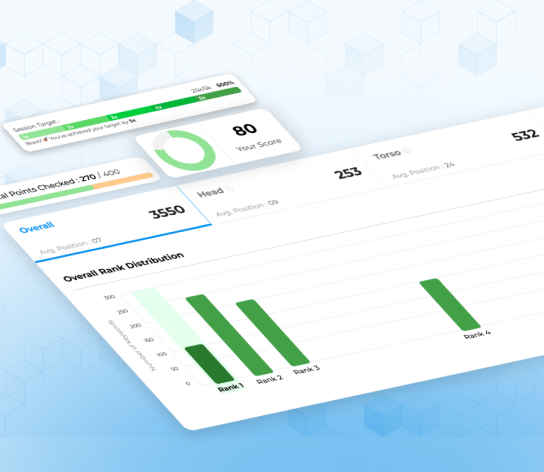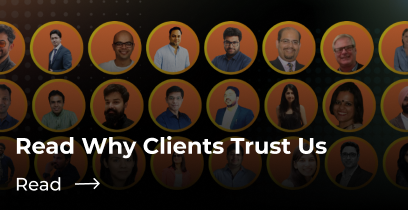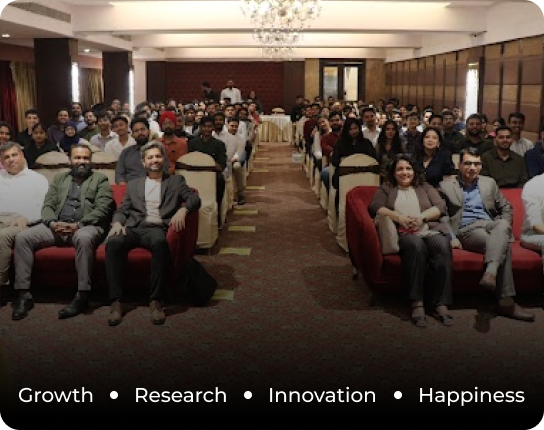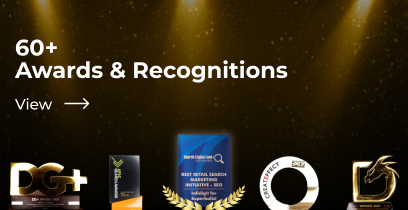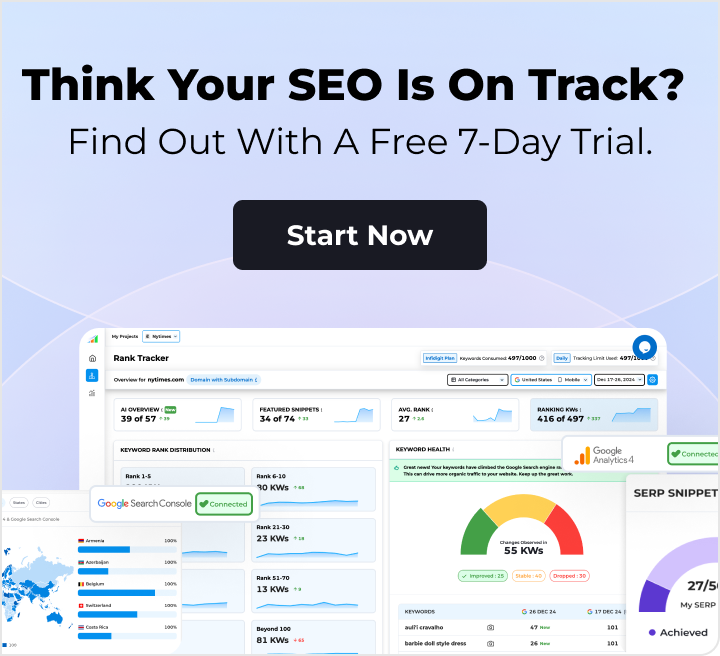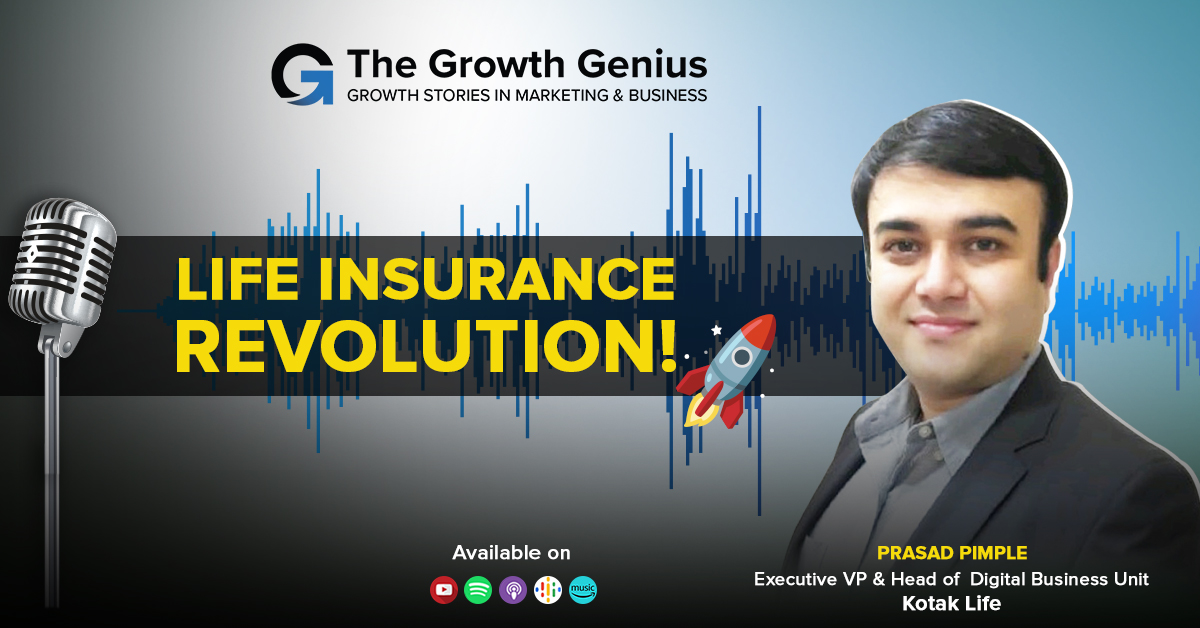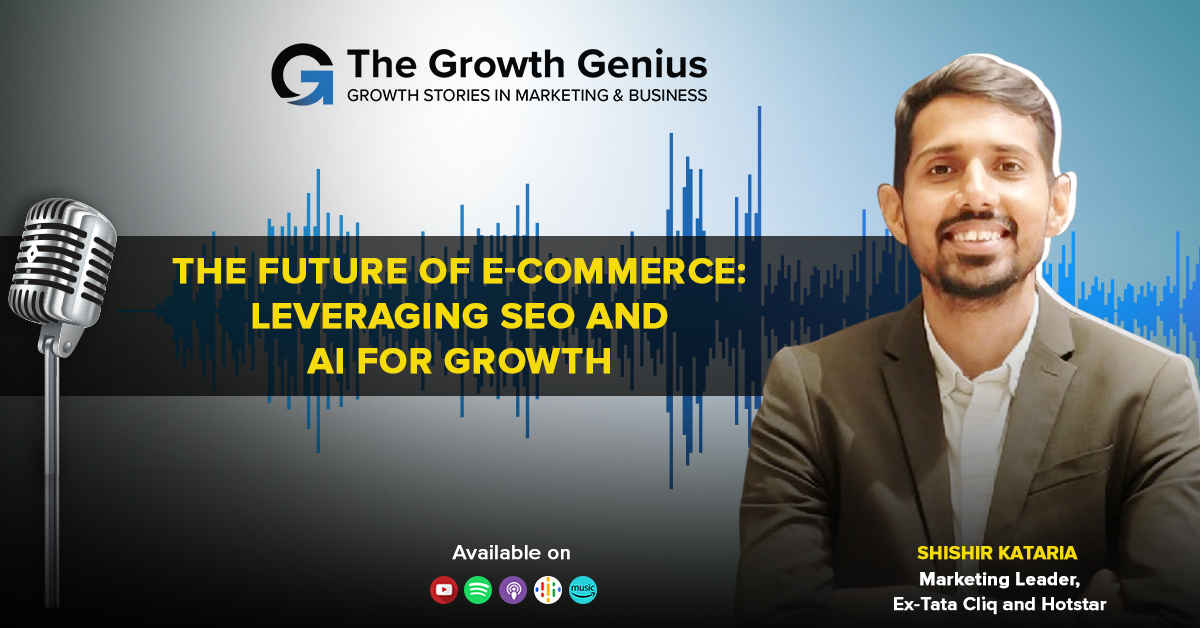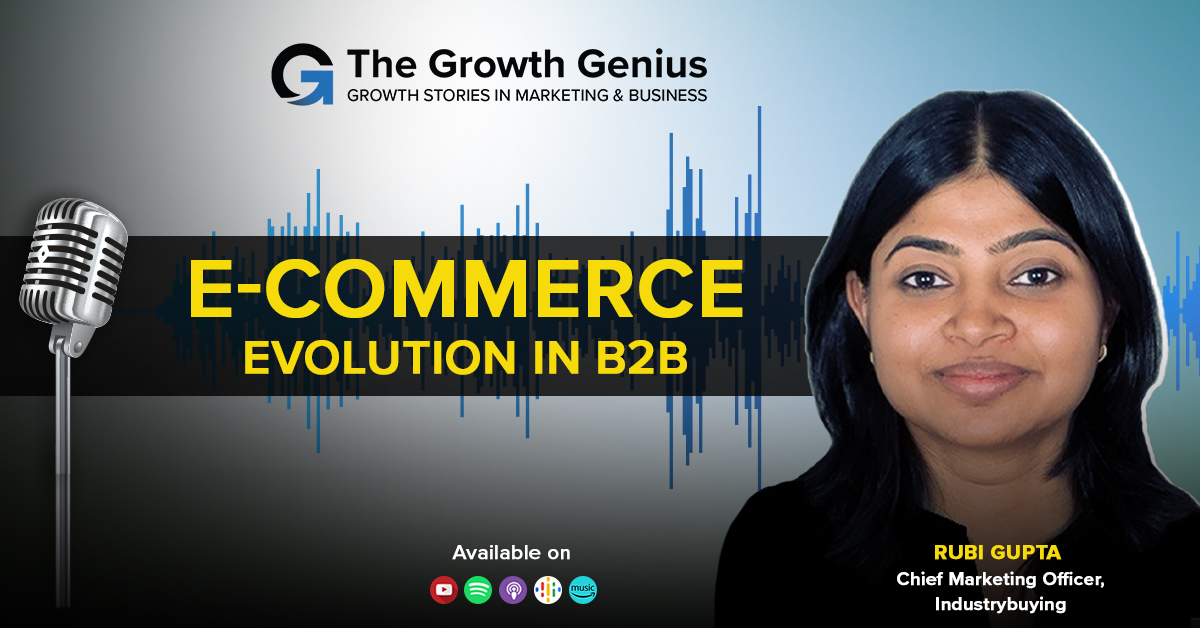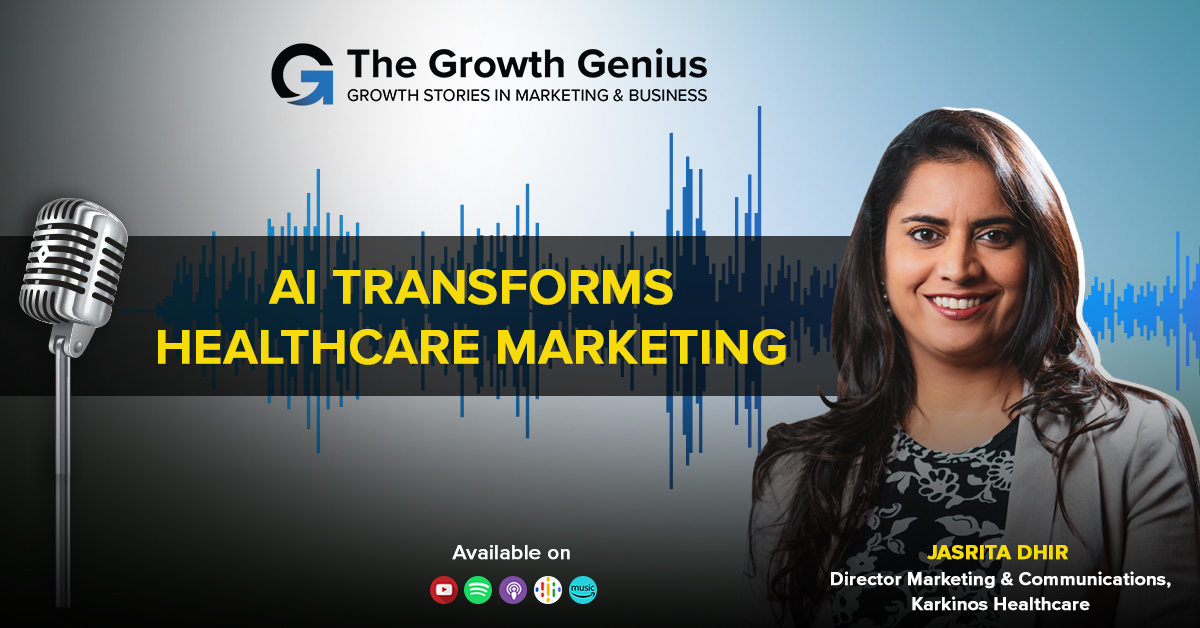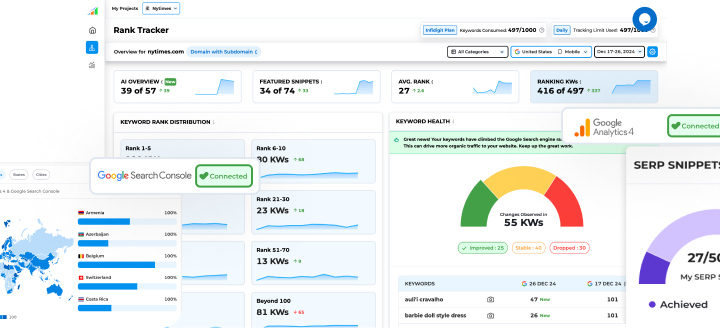Listen on your Podcast app
Summary
In this podcast episode, the future of advertising marketing and data is explored. The discussion delves into the evolving landscape of advertising and marketing, highlighting the importance of data-driven strategies. The guests emphasize the need for marketers to adapt to changing consumer behaviors and preferences, as well as the increasing role of technology in shaping advertising campaigns. They also discuss the challenges and opportunities presented by emerging technologies such as artificial intelligence and machine learning. Overall, the conversation provides valuable insights into the future of advertising marketing, emphasizing the significance of data-driven decision-making and the need for marketers to stay ahead of the curve.
Key Take Aways
8 Key Takeaways for Digital Marketers:
- The Rise of Artificial Intelligence (AI): AI is transforming the advertising and marketing landscape by enabling personalized and targeted campaigns, improving customer experiences, and optimizing ad placements.
- Data Privacy and Compliance: With increasing concerns over data privacy, digital marketers need to prioritize compliance with regulations like GDPR and CCPA to build trust with consumers.
- Importance of Customer Experience: Delivering exceptional customer experiences is crucial for digital marketers to build brand loyalty and drive conversions. This includes personalized content, seamless user journeys, and responsive customer support.
- Mobile-First Approach: As mobile usage continues to dominate, digital marketers must prioritize mobile optimization, including responsive design, mobile-friendly ads, and mobile app experiences.
- Video Advertising: Video content is gaining popularity, and digital marketers should leverage this trend by creating engaging and shareable video ads to capture audience attention and drive conversions.
- Voice Search Optimization: With the rise of voice assistants like Siri and Alexa, digital marketers need to optimize their content for voice search queries to ensure visibility and relevance in search engine results.
- Influencer Marketing: Collaborating with influencers can be an effective strategy for digital marketers to reach their target audience, build brand credibility, and drive conversions through authentic recommendations.
- Data-Driven Decision Making: Leveraging data analytics and insights is crucial for digital marketers to make informed decisions, optimize campaigns, and measure the success of their marketing efforts.
Overall, digital marketers need to stay updated with emerging technologies, prioritize customer experience, and leverage data-driven strategies to stay ahead in the ever-evolving advertising and marketing landscape.
Read Transcript
Bruce Biegle:- 2021 was the fastest growing advertising year that we had ever seen. The market grew in the United States by some 25%, digital grew over 33%, so no matter what part of marketing you were in it grew, made everybody look very smart, they spent a lot of money. ‘22 we came into the year with the same digital tailwinds, growing fast, Direct Mail was growing, everything was still growing right up until about June. So complexity, new channel development and evolution are some of the drivers that we see keeping a lot of agency services outsourced and frankly keeping the holding companies and the Independents doing well even as the market changes. If you think about CRM, database management, CDPs, DMPs clean rooms, there’s a tremendous amount of data technology, what we think of as the infrastructure that makes all of that, that allows and enables data to move around and that had not been heavily invested until around 2017.
Shelly Singh:- Hello and welcome to The Growth Genius Series brought to you by DMAAsia and Infidigit. My name is Shelly and I’m the host. In this Growth Genius series, the world’s best marketers and business leaders are interviewed about the brands they have worked on, their successful campaign strategies, how they got noticed by their customers and how they delivered better customer experiences to drive growth.
Today our guest speaker is Bruce Beagle, senior managing partner at Winterberry group. With more than three decades of experience, Bruce Beagle has led hundreds of engagements in growth strategies, commercial diligence and enterprise data and technology for firms in media, financial services, retail, technology, advertising and marketing agencies. As an entrepreneur, Bruce has hands-on experience building companies from the ground up and sold his two companies before establishing Winterberry group. In addition to his role at Winterberry group, Bruce has served as a senior advisor to investment bank Petsky Prunier and as a member of the DMA board. He’s an advisor to and member of the board of directors for several private marketing companies and frequent speaker at major marketing industry conferences. He is also a recipient of the Silver Apple and Mal Dunn Leadership awards from the Direct Marketing Club of New York. Welcome to the podcast, Bruce.
Bruce:- Thank you, Shelly, it’s nice to be here.
Shelly:- Great. So you started your company in 2003 almost 20 years ago, so please tell us about your background, professional journey and your interest in building consulting practice.
Bruce:- I came out of school with a history degree, but nothing to do with any of this. And after working on Wall Street for several years, I joined some friends who were at a software company and we were doing what is now known as digital out of home media, back then it wasn’t a category yet. And we were doing digital signage in grocery and for corporate retail. We built that company over about seven years, sold it and after that I did a little bit of consulting and then some friends called and said, “Hey could you help run a data company?” and I said, ”What does a data company do?” Little did I know. And did that for four years, we sold that business to an agency and then I had some friends in investment banking who said, you know, “What would you do next?” and one of the things that I learned as an entrepreneur was when my board asked me a question, they wanted an answer at the next board meeting. They didn’t really want to wait around for a year or whatever and that there were many bright consultants they could speak to in general but they didn’t know my industry well enough. And when mygroup was started with a focus that said, we should be able to work fast and be experts, we deliver insight and value within that 90-day period and we have held to that philosophy ever since.
Shelly:- You have just released a report on outlet for advertising marketing and data 2023 and you have been presenting this at various forums. Our viewers would like to have the Insight on the report. To start with, please give us an overview of what happened in 2022 and what was its impact on overall marketing.
Bruce:- Yeah. So 2022 is an interesting year and to put it in perspective, 2021 was the fastest growing advertising year that we had ever seen. The market grew in the United States some 25%, digital grew over 33% so no matter what part of marketing you were in it grew. Made everybody look very smart, they spent a lot of money. ‘22 we came into the year with the same digital tailwinds growing fast, Direct Mail was growing, everything was still growing right up until about June. And the markets have been losing confidence in the economy and advertising and marketing growth is very tied to macroeconomic concerns. And obviously, we had geopolitical events, you know, Russia – Ukraine, and then we had the gas shortage and then you started to hear – and the Fed was raising interest rates, trying to cool inflation and by the summer it really took hold. And the market started to lose confidence and we started to see a decline in spending. So your year was kind of two halves, you had a good half of the year that grew very strongly and the second half of the year, the third quarter, we sort of turned down. As you ramp into the holidays, the Christmas holidays here, usually you get a pickup in the fourth, but it was very uneven. And EDA spend was off. We got some of the tailwinds from the World Cup helped but overall, you know, if we looked at the first half of the year you had a market that was still growing close to 15%, and in the second half of the year you had a market that was flat.
So while overall the numbers if you look at them five years from now look okay. and so growth there was really a lot of noise underneath and, you know, just take a channel like paid social, still growing but you started to see let up stall out still because of Apple’s ATT, you saw headwinds at Snap, we had the Elon Musk adventure at Twitter, so don’t even know where to put that one and Tiktok picking advertisers and sharing paid social. So while social grew, the individual share of social within started to move around. So there was a lot of that, direct mail actually had a good year as direct consumer marketers looked at the CPM increases in paid social and paid search that had been going on for five straight years, they were looking for another performance media channel where they could really control audience and direct mail goes, oh there’s a new channel, it’s called direct mail, we should try that. So there was a little of what’s old has become more in favor and then probably the biggest story of the year was in the United States market, we have so much fragmentation in video. So there are some 400 cable providers and video distribution, what they call MVPDs, and we saw a ramp of connected television using programmatic methods and direct sales methods to insert video commercials for the home screen, not just the mobile or the laptop and CTV which had grown to about $14 billion category mostly through the COVID period, sort of continued its growth, grew like 27% plus, it was supposed to go from $14.4 billion to $19 billion, it wound up somewhere in the neighbourhood of $21 billion dollars.
So not only was it growing organically, it also started to take some of the share from the TV, from broadcast, linear TV. So that trend, probably the other big trend of the year was retail media marketplaces, you know. When we hear retail media we think Amazon, it wasn’t just Amazon, it was Walmart, it was all the other grocery chains, there were auto groups like Carbone, where they started to take not just media advertising dollars to advertise on-site or what they call on platform, you know, that platform could be hosted by Walmart or Amazon et cetera, and they also took trade promotion dollars that had traditionally been in the shopper marketing category, they moved some of those too, and it has become the fastest growing category for media in general, lots of technology investment, lots of investment in first party audiences. And so those two areas, CTV and retail media grew the fastest, but overall it was a good year.
The other thing that was kind of interesting is that agency spend stayed very strong throughout the year. So even though we started to see the market tailing off, we’re now tracking 23 channels for marketing and advertising, you keep adding channels every other year. There seems to be another channel that as a marketer we need to pay attention to and we need to understand the data, the drivers, the performance, the measurement et cetera. We have complexity in marketing, like when I started forecasting in 2007, so it’s about 17 years now, I think we covered 12 channels. So the number of channels has doubled and the amount of spend we track about $500 billion worth of spend. So the spend has gone up, the channels have increased, so if you’re a brand marketer and you’re trying to solve for this, you become more agency dependent because you need that outside expertise especially in emerging channels where it’s unlikely that your own team has that expertise. So complexity, new channel development evolution are some of the drivers that we see keeping a lot of agency services outsourced and frankly keeping the holding companies and the Independents doing well even as the market changes.
Shelly:- Very interesting. So what are the major shifts that you are seeing happening?
Bruce:- A couple of things, I would think one we have had – it does start with privacy, you know, it seems like every conversation starts with either privacy or are we going to be in a recession. Where has privacy gone? We don’t have a unified privacy landscape, there’s no GDPR for the United States. There is the California Protection Act, there’s one in Virginia, there’s one in Colorado, so state by state, if you are a brand or you are a supplier or a media company, you have different privacy rules and regs, on top of that you have how is privacy going to be interpreted by the browsers. So Apple makes its own decisions in the name of privacy. Google makes its decisions in the name of – what’s in the best interest of the consumer. I don’t know if they actually asked the consumer, but it’s been very good for their advertising and ad spend growth, but we’ve seen at least 50% of the cookies go away. And cookies have evolved to become the identifier that was really leveraged in the growth of digital advertising. As the cookies went away, there was a realization that I need a consented first party relationship with that consumer, so that I have a right to engage with them. And so over the last three or four years, we have seen a race to build first party data assets. If you were a direct marketer, that was something you always worked on because that’s how you went to market. In the digital world in CPG, it was always an indirect relationship, so you said I have cookies I don’t need. Well in this market, you need to build it. So the media companies, recognizing that cookies were going to be the answer, started focusing on subscription, circulation, paywalls, and how they build and collect first party data. Brands did the same thing, it’s great to say I’m going to collect all this data, reality was they didn’t have any infrastructure. If you think about CRM, database management, CDPs, DMPs, clean rooms, there’s a tremendous amount of data technology, what we think of as the infrastructure that makes all of that allows and enables data to move around and that had not been heavily invested until around 2017. and over the last five years we watched data and related analytics and technology spend go from – 2019 it was around $20 billion, it was about $33 billion, well, last year and it is because we are overhauling the infrastructure of the industry and we’re leveraging data in almost every marketing channel. Whether it’s performance or not you’re trying to get better performance out of your Investments, even if you’re a brand marketer you want better measurement, you want better attribution and again it comes back to data and identity Investments. So that’s probably been underpinning the market has been this huge infrastructure investment that we see continuing for the next several years. Penetration of CDPs might be at 60%, DMPs are part of the programmatic tech stack, so there’s pretty good coverage. Clean rooms 15% to 20%, so we’re a long way from a market that’s truly covered and a market that’s really prepared for where the industry needs to be.
Shelly:- Yeah
Bruce:- And it used to be really hard to get those budgets, well, when you say we might be out of compliance and at risk from a privacy standpoint, magically the budget appears.
Shelly:- Okay
Bruce:- And it doesn’t come out of your working media budget as a marketer, it’s really coming out of the corporate budget.
Shelly:- Wow.
Bruce:- It is part of protecting the corporate, the enterprise itself. So that is also, I used to be able to say all right, this amount of money was spent, you know, from the CRM database that was part of direct mail or email and now that database is a corporate function and all the infrastructure around it and it has applications that are used by marketing, that are used by IT, that are used by finance and operations. It’s a little different from the marketing that we may have grown up with, but it’s a far more interesting place. And we’re seeing something similar happening in Europe, GDPR was a forcing function, the technology has been catching up, people are building consented first party relationships because the identifier loss has been even more rapid under GDPR than under the patchwork of regulation you have in North America.
Shelly:- Wow. So what are the macro trends that are shaping up?
Bruce:- If you’re going to do more marketing, you need more content. We used to shoot video and say hey this is a 30-second commercial or this is going to be a 15 second spot or this is long-form infomercial. Now I go and I shoot a long piece of video knowing that it will be chopped up into 60s, 30s, 15s, 7s 6s et cetera, and you used to cross every format. So when I think about how I produce, I am thinking multi-format on the channel at the beginning not later, saves a lot of rework and so we have creative going into that and there’s also a lot of content, editorial driven content especially in b2b. So another macro trend, so video and how it’s being produced, created and leveraged is one, b2b is the other, b2b has been events and sales and that’s pretty much 70% – 80% of the budget, well COVID changed that. We didn’t have events, salespeople couldn’t call on people. Even today, you make an appointment to go see somebody, you’re lucky they’re in the office.
Shelly:- Oh yeah.
Bruce:- Well, you’ll show up and they’re on Zoom and you’re like, why did I just make this trip. It is hard to manage which said okay marketing, b2b marketers are now going to be far more dependent on marketing. Marketing used to be kind of an afterthought, it was sales, sales ops and all of those marketing people and the marketing people were there to collect the leads from the trade show. Marketing and sales are much more balanced, b2b marketing spend in the US is supposed to be close to $50 billion this year, so it’s no longer an inconsequential but as importantly yes experiential is coming back at events, but events are coming back hybrid. We’ll do something online, you know, or we’ll do something offline and amplify it online by having some sessions that you can access over the web. So spend time there. We are seeing a lot of spend on account based marketing, need nurturing, demand generation which is basically search, paid social and performance media, you know, LinkedIn is a, you know, three billion plus provider of b2b paid social.
So when you think about where the money is, a lot of new money has gone into digital. In the offline world in the general budget about 60% of total budgets are spent digitally and 40% offline. We’re not going to see that type of relationship in b2b, from b2b traditional, experiential et cetera, will still actually be the balance of spend because there is nothing like a face-to-face conversation to build relationships, but it won’t be the 80% traditional and 20%, it’s getting closer, it’s just probably flipped from what overall market looks like and digital marketing, you know, b2b professionals, we expect the b2b marketing we receive to be as good as the b2c marketing we’re getting from the Amazons and the other providers. So there’s been a change in how marketing is thought about, how lead-gen is performing, again data, quality, you know, consent all of those, you know, b2b was treated leniently in the first few years of GDPR and certainly in regulation in the U.S, not so much. They’re starting to pay attention, so we need the same best practices in the b2b world as we had in b2c and they want the same level of measurability. If your sales people – you want to optimize the sales force so you want to optimize the top of the funnel and nurturing a more complex decision-making process all the way through the funnel. So b2b marketing is growing up. It doesn’t have the scale that b2c will have, you know, coming in at about 10% of the market but it’s growing faster than the b2c market.
Shelly:- Okay, great. So you already spoke about privacy regulations and the cookie-less future. Can you elaborate more on how the cookie-less future will create an impact on data-driven marketing?
Bruce:- So we started writing about identity and cookies in 2016-2017 as the market was just emerging. When we started following the data landscape probably 2010, we started forecasting and you could see the cookies were supposed to be temporary. Temporary has lasted 15 years. Privacy and the way things need to be consented and accepted and opted in, between that and the browsers we said all right, cookies are gone, what are you going to use. So we have email based identifiers, so think of the EUID, the trade desks, you know, UID, Live Ramps, Ramp ID. There are probably 90 different first party based identity solutions that have been built. People aren’t using all of them, they’ll use the ones they need but effectively even if you need a way in a privately compliant way to identify and to target. So we think that the market will evolve where about 20% of the market will be consented to first party ID solutions. We think there’ll be another maybe 25% -30% of targeted marketing that leverage is modelled up versions of that, things we think but aren’t necessarily tied to a UID. So still good targeting but not as good and we believe that the rest of the market goes contextual and we’re seeing a huge amount of growth in contextual targeting both in CTV, in display, in all formats of video. You know, if you’re outside of a walled garden where they have a first party ID based solution, they are going to say, all right, you want these people, tell us what the look-alikes are, we’ll find them within our garden. When you get into the open web, you don’t have that same first party base so that context seems to be and it’s contextual with a whole lot of analytics and machine learning, but they’re doing a better job of predictive. Five years ago machine learning was more of a conversation about where we were going and AI, everybody’s like AI is coming. Well, AI is definitely coming, but where we’ve seen real growth in application is in the programmatic use of machine learning to do a lot of prediction regardless of what identifier is available. So it will pick whatever set of identifiers you have and make the best decision and we’re seeing it in the programmatic market, we’re seeing it offline in direct mail, we’re seeing it on websites for personalization. So the solutions are machine learning based and we think that that’s the area that is maturing first and it’s very good because it’ll take real-time signals, process them, spit out forecasts or predict bids.
AI on the other hand is much more conversational, text-based. It’s not actually good for targeted advertising. It’s not good for card product search. It’s very good at customer service. It’s very good for writing subject headlines where it can take the full body of text and predict what is the right answer or create a right answer, that’s not so good for paid media and [inaudible] (0:24:29) media. So we think machine learning will have its set of use cases, it’s a subcategory of AI and conversational AI we’ll have its set of use cases. But we think the biggest thing that will transform this market over the next three years, that’s what we’re watching. Every single channel will have one or the other applied to some level.
Shelly:- Great. So this is very interesting about AI and machine learning, the future is going to be very bright for AI and machine learning. There’s another thing which I saw in your report about talent. So with hybrid and work from home models, how will the companies manage the talent and also how to measure the productivity?
Bruce:- So obviously it’s a big conversation. There’s a generation that came out during COVID into the workforce that never was in an office and did have the benefit of leaning over to their colleagues and saying, hey, what about and getting an answer. Instead they got used to scheduling a Zoom for 30 minutes and it was always very formal. They didn’t develop that muscle of informal conversation and have a back channel. We think what happens now is, yes, they have to come back to work and it’s not all about them. We think that there’s a middle group that has been working for 10 plus years that is very comfortable being home and watching the kids and doing their errands and not commuting and there’s a senior executive group that either has to be in or a society they don’t have to be in. So we think based on all of that we probably wind up with a hybrid market. Creative strategy are things that require a lot of collaboration, so the more collaborative the role the more you need to be in the office. We have seen three days a week coming back, some places fixed three days, other variable three days, maybe two days flex, that seems to be dominating the agency and services conversation. And then you get somebody like Disney where Bob Lager comes back and says, “You’re all back five days” or an Elon Musk at Twitter and SpaceX, “You’re all back five days.”
I think it is where the office space is, how dispersed is your pool of talent and how are you going to manage a hybrid. And the managing hybrid and figuring out, there are some sales roles where productivity is measured by did you hit your targets or didn’t you hit targets. Other roles, developers have a code base that they need to deliver, a lot of their work might have been in isolation, if you are in a call centre environment you could be physically in that call centre where you get active monitoring or you get active help or you may be distributed. So do you need to be in or do you need to be out, but you certainly need to be logged in. So I think I understand what’s the right metrics and I actually believe that the BPO market, call centres service they’ve been doing this longer. They had more experience.
I think the agency world has to find its way and find its way to be creative and strategic and engage with their clients while operating in a more hybrid environment, especially when your clients are hybrid it’s even more difficult. Should I be in when my clients are in? What if I have two different clients, right? So there are a lot of complications. We think that there’s good work started on tools to better manage productivity, you know, outside of just capacity utilization which is how many, you know, hours are you there, are you being theoretically productive, but how do we collaborate better and Slack, Teams, you know, but it’s what comes next. And we think that that is a software category that the market, you know, everybody’s using something, but what are the standards, what are the KPIs, what are the metrics we’re supposed to be tracking, I think there’s a lot of organizational work to be done. But there’s a recognition that we have to answer how we want people to develop human interaction skills so they can have a career. It’s not a point in time you do this, but it’s the things you learn working with other people.
Shelly:- Great. So tell us about the outlook on 2023 as well.
Bruce:- So what we’re thinking right now subject to whether the economy grows or shrinks, right now we’re right on the edge. The current GDP forecasters will be up somewhere between 0.2% and 1%, so slight growth. Advertising and marketing grows two- two and a half times, so you could have a year where ad spend would grow maybe 3% or 4%, throw on hybrid throw on b2b and we’re looking at around 5% to 6% growth. That’s the baseline, it’s just under six on a blending basis, b2b growing slightly faster and individual channels capturing more money. We think linear actually shrinks. There’s no election, there’s no big tentpole events this year, there’s nothing that propels the brand and when the economy is growing slowly or retracting, there’s always a shift to retention marketing and performance channels that you can measure well and that’s generally not been linear. CTV will still see because it’s that hybrid of brand and performance because it’s targetable and measurable. So we’re still seeing a lot of money going in that direction. Mail, paid social, paid search should do okay, just it’s okay at a different level, you know, six percent growth would be good. If the market declines a few percentage points because we go into recession, that growth will come down. You don’t see a scenario yet where we would have negative growth in advertising marketing. But the big trends are going to continue. Focus on data infrastructure, retail media marketplace growth and how does that fit, it doesn’t really work. All the money’s being there, a ton of money going, they said that the market in the US will go from 45 billion spent on retail media marketplaces to 100 billion over the next couple of years. It’s a massive jump when we don’t have our measurement down and, you know, it’s kind of that last slick thing, they take, you know, the cost per order metric, you look and say oh retail media advertising drove that. Well, how much would I have gotten just because my brand was in the store? So incrementality is something that will pay a lot of attention to. Am I getting the incremental benefit as I put more money to work? So we’re still seeing that, we think we’re going to continue to live in a hybrid world online – offline. Like traditional is not going away, at best we think the market gets up to maybe 30% commerce 35% commerce and 65% of on-prem traditional walking into stores buying new things. People are figuring out what I should order online and what I really need to go and try on. And if we start seeing the cost of returns go up, all of a sudden you’ll see people pay a lot more attention instead of just ordering everything, oh this doesn’t work and send it all back for free, we’ll see a change of behaviour. So we’re watching that one. We’re watching CTV in the US, a bigger issue here than I think it is in Europe right now and by the way we have a B2B Outlook coming out which will drill in on b2b and then we have a UK Outlook and a European Outlook.
Shelly:- Oh wow
Bruce:- It could be out by the end of February. We have offices in the UK in France as well. So we’re trying to do a better job of serving those markets and really doing a market by market perspective. Canada however we still kind of lump in so that the macro trends look the same, the privacy regime looks like Europe. So Canada kind of lives in a hybrid place. but it’s [inaudible] (0:33:29) general but overall if the market, if the economy and the geopolitical doesn’t go completely sideways, we think it’s going to be what would have been considered a very good year four years ago but we’re starting to see digital growth slowing because it’s a lot of large numbers. There’s only so much you can shop into a channel and there’s only so much growth in those. You know Facebook’s user base doesn’t change and the hours spent on the platform doesn’t change. The only way they’re going to grow their revenue to satisfy Wall Street is by raising CPMs and all of the platforms have been doing this for four or five years. Ultimately when you do your analytics you go, you know, what there’s a point where it doesn’t pay out the same way and I’ve got to go find a new channel whether it’s how do I work with influencers or affiliate like there’s always that search for the perfect mix of channels, we’re not there.
Shelly:- That’s great. Wonderful insights from the report. So this brings us to our last segment. Please tell us any one passion you follow and how it elevates your profession.
Bruce:- One, I read an awful lot and I travel a lot. I believe that to understand the markets that you serve, you have to be in the market. I believe that you can’t be there all the time, you need to be there enough, you need to understand culture, I happen to have a passion around food and wine, that helps. And you have to try everything. I spent a year and a half as a backpacker wandering through Asia when I was in my 20s. You know, always learn about the custom whether it’s the country you’re working in, the customer you’re working with, you have to have a passion and you have to have curiosity. As long as you’re curious about what you do and you want to learn, I think that this is a great field to be in.
Shelly:- That’s very well said because we all are born with curiosity but then we forget to be curious, right. Curiosity is very important. So how can our viewers find you? Where can they find you and connect with you and also where can they download this report?
Bruce:- So the report is on our website www.winterberrygroup.com under our “Insights” and you can also find reports on Identity and, you know, Collaborative Data Solutions so tend to put out two to three papers a year. We have one coming out on marketing analytics that will be out in April and one on our outlook for B2B and how this evolution is occurring and where we think it goes. That should be out at the beginning of June and we’re going to do one for connected e-commerce but you can find us at winterberrygroup.com. Because of our sponsor model all of our white papers are free in exchange for a little bit of PIL.
Shelly:- Yeah. That’s great. Thanks a lot for giving us time and a sneak peek into the outlook of 2023 report and I hope to meet you again with another report soon. Thank you so much.
Bruce:- I hope to see you again. Hopefully I’ll see you again in person as well.
Shelly:- Sure, definitely.
Bruce:- All right, take care, thank you, Shelly.
Shelly:- Thank you so much. To all our viewers thanks for listening and please download the report for a detailed outlook on 2023. If you enjoyed this episode and you’d like to help and support this podcast, please share it with your friends, post about it on social media, and leave a rating or review. I’ll see you next time in a new episode with a new speaker. Till then peace.

Popular Searches
How useful was this post?
0 / 5. 0


